Hybrid arrangements and remote work have introduced many positive changes to the global workforce, including a better work-life balance and minimal commuting. However, some challenges have emerged that leadership and management need to address.
If remote-first culture is more prevalent than ever, why are in-office workers the first to be considered for promotions?
The short answer is proximity bias. Like most biases, it is unconscious and deeply human, yet it can have far-reaching consequences on employee engagement and the bottom line.
In this article, we’ll dive deeper into this phenomenon to answer the following questions:
- What is proximity bias?
- What are examples of proximity bias in the workplace?
- What can we do to mitigate its effects?
Now, let’s jump in.

Table of Contents
Proximity bias definition
Proximity bias is an unconscious inclination to give preferential treatment to people who are physically closer to us. In hybrid workplaces, this tendency increases the likelihood of managers showing favoritism to in-office employees simply because they spend more in-person time together.
The latest statistics on remote work indicate that most employees feel more productive when working from home. So, why do their in-office counterparts seem to reap most of the benefits?
Here’s what Dr. Diane Rosen, a workplace expert, coach, and organizational consultant, says:

“We tend to rely on people who are near to us. Nearness can be:
- Physical,
- Emotional, or
- Psychological.
In the office context, any of those three might be at play.”
Data backs this up. In 2022, 96% of US executives admitted to paying more attention to employees who come to the office, as seen in research on proximity bias from Envoy.
So, let’s take a closer look at how proximity bias can manifest in the workplace.
💡 Pumble Pro Tip
To learn more about other biases that influence how we work, check out these posts:
Proximity bias examples
One of the most common aspects affected by proximity bias is task and project delegation. Managers might hand over more demanding projects to in-office workers, believing they have what it takes to see them through.
As Dr. Rosen puts it:

“It’s easy to pop into someone’s office with a quick request or for a conversation rather than scheduling a call or video conference, sending emails, and waiting for a response.”
This type of dynamic can also influence performance reviews. Say that a manager is evaluating two employees performing the same function. Although their performance is objectively similar, the on-site worker could receive better reviews simply due to their heightened visibility.
Because they are out of sight, employees working from home might feel their efforts are underappreciated. Feeling undervalued is a major hindrance, as recognition directly affects a person’s sense of belonging and loyalty at work.
What results from these performance reviews? Unconsciously, managers feel that the people they see the most deserve adequate rewards. In-office workers are rewarded with promotions, while remote workers get fewer career development opportunities.
Without taking measures to counteract proximity bias, feelings of exclusion run rampant.
How to overcome proximity bias
There are no ill intentions behind proximity bias. It stems from our need to form deeper connections with others, although it can be problematic in practice, especially at work. Fortunately, there are several ways you can keep it at bay in your organization.
Initiate virtual discussions
If you’re in a leadership or managerial position, let your team know you’re there to address any questions or concerns.
This is where asynchronous communication comes in handy because technological tools allow you to easily boost employee engagement.
For instance, you could post a message in a team channel asking members to share their opinions on a project or campaign. People will be able to post their responses freely, regardless of their time zone. These types of conversations help alleviate the pressure of having to respond immediately.
Thus, employees can:
- Sit with their thoughts,
- Formulate their opinions, and
- Answer at their own pace.
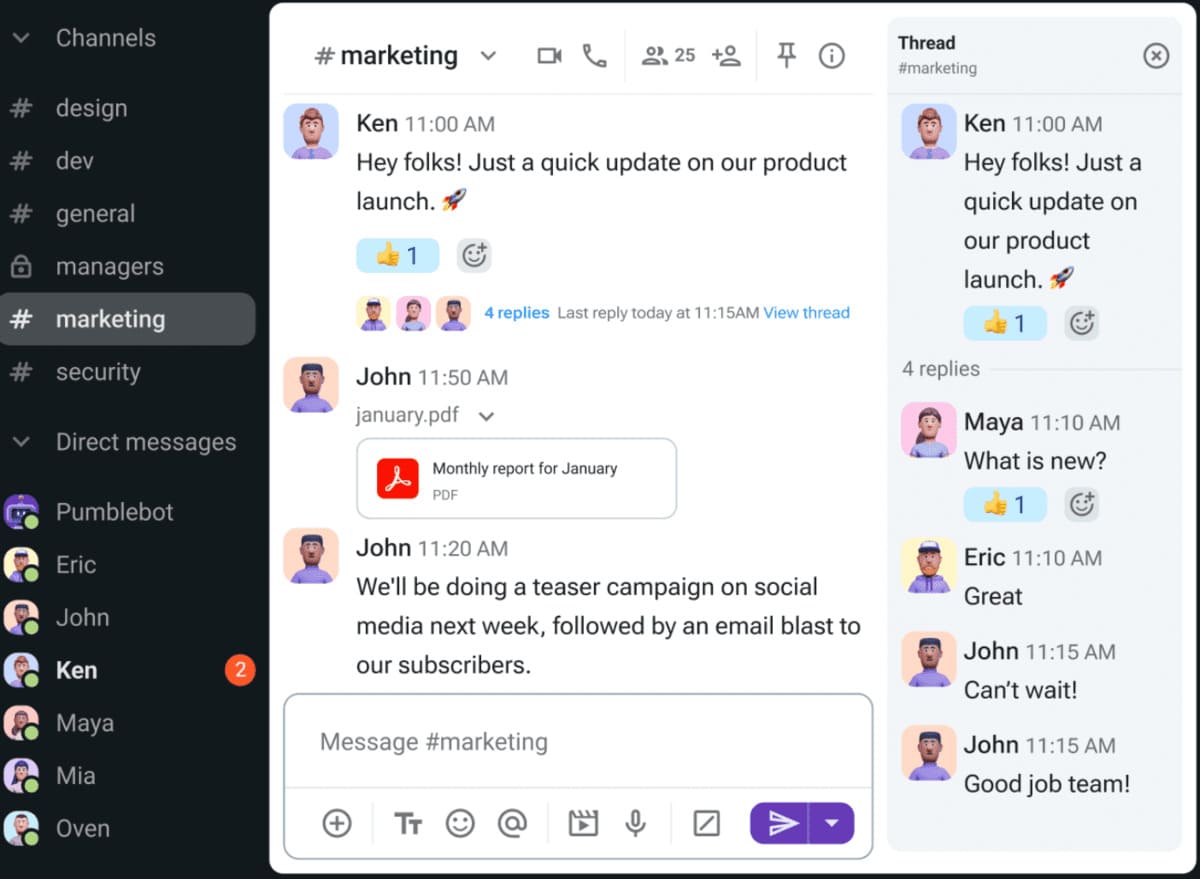
A big concern with hybrid teams is that employees working from home will get lost in numerous virtual discussions. For this reason, it’s all the more crucial to choose an app like Pumble, our business communication tool, which offers unlimited message history. Using the relevant search parameters, you can quickly fly through all posts and messages and find what you need each time.
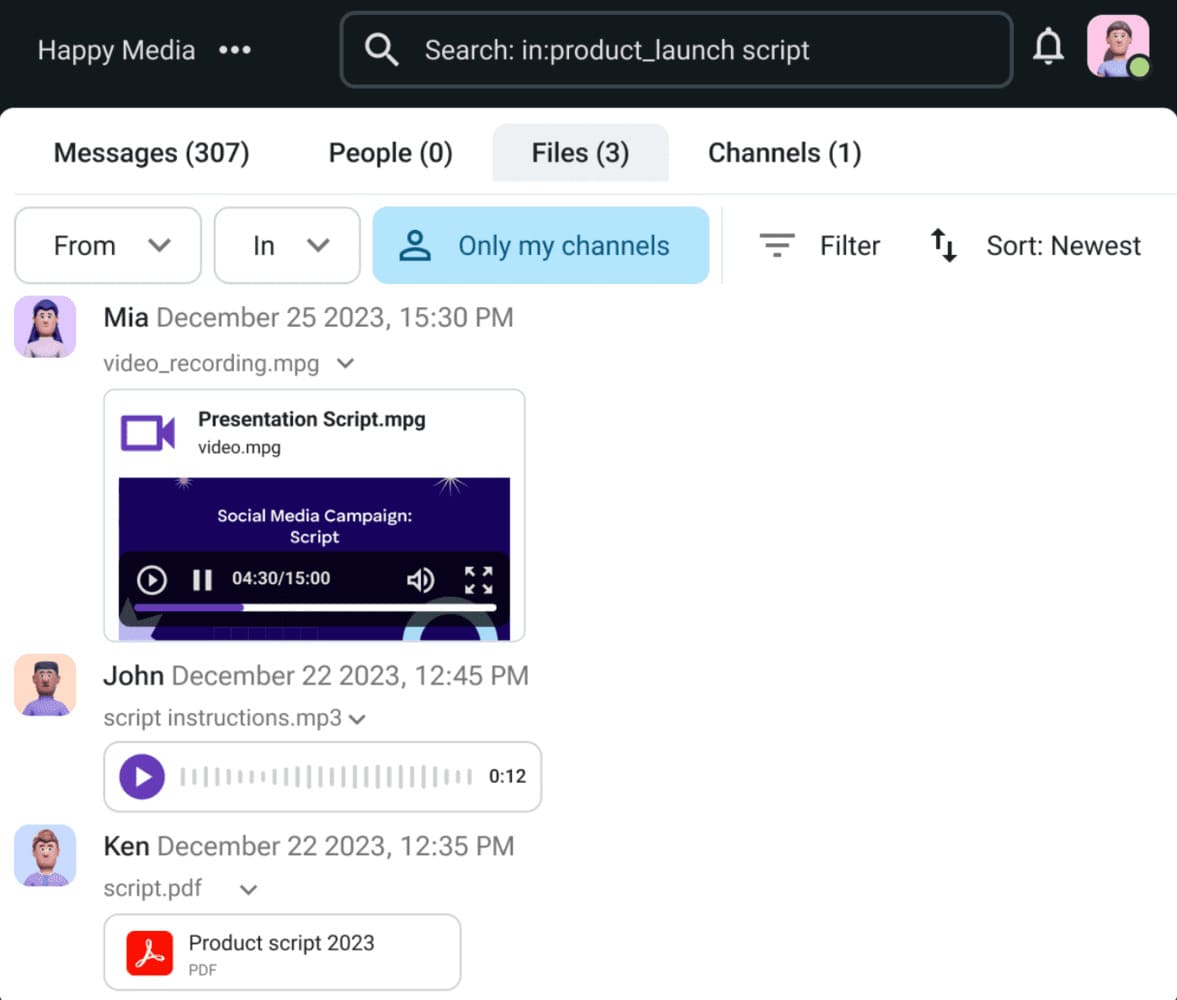
Best of all, everyone has space to chime in, which minimizes the power of proximity bias.
Schedule regular check-ins
Checking in with team members is one of the most effective strategies to beat proximity bias. How an employee will respond depends on their workload and preferred communication style.
Some employees may lean more towards written communication. In that case, direct messaging is the way to go.
However, if their schedule is packed, writing out a lengthy response could prove inconvenient.
So, inform your team that they can respond via other means. Recording a voice or video message is practical, time-saving, and gets the job done.
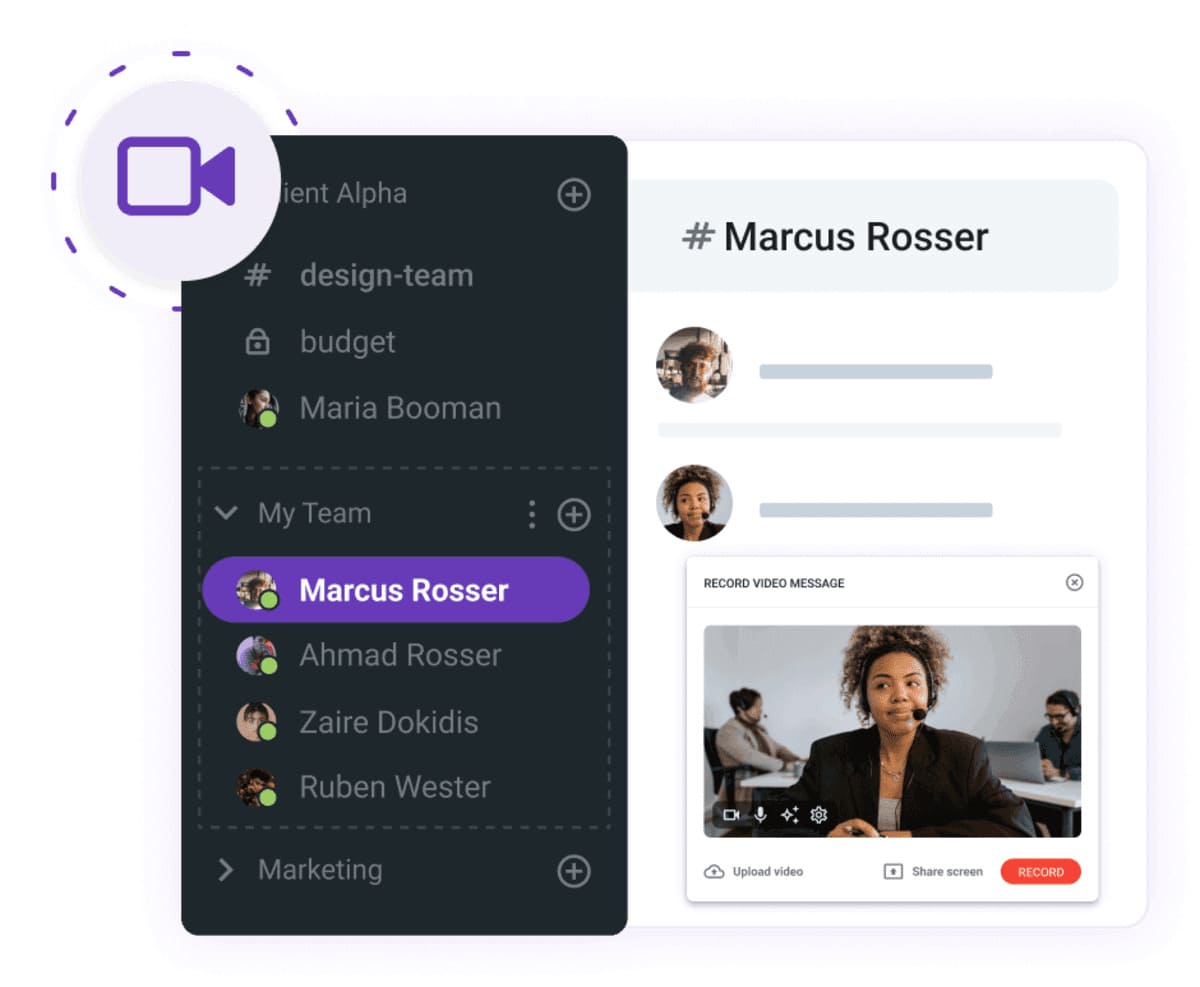
You can also leverage the power of video conferencing for much-needed face-to-face time. While 1-on-1 meetings are excellent for touching base with each team member individually, don’t forget about group meetings. Use them to make sure the whole team is aligned and show that you see how their unified efforts are shaping up.
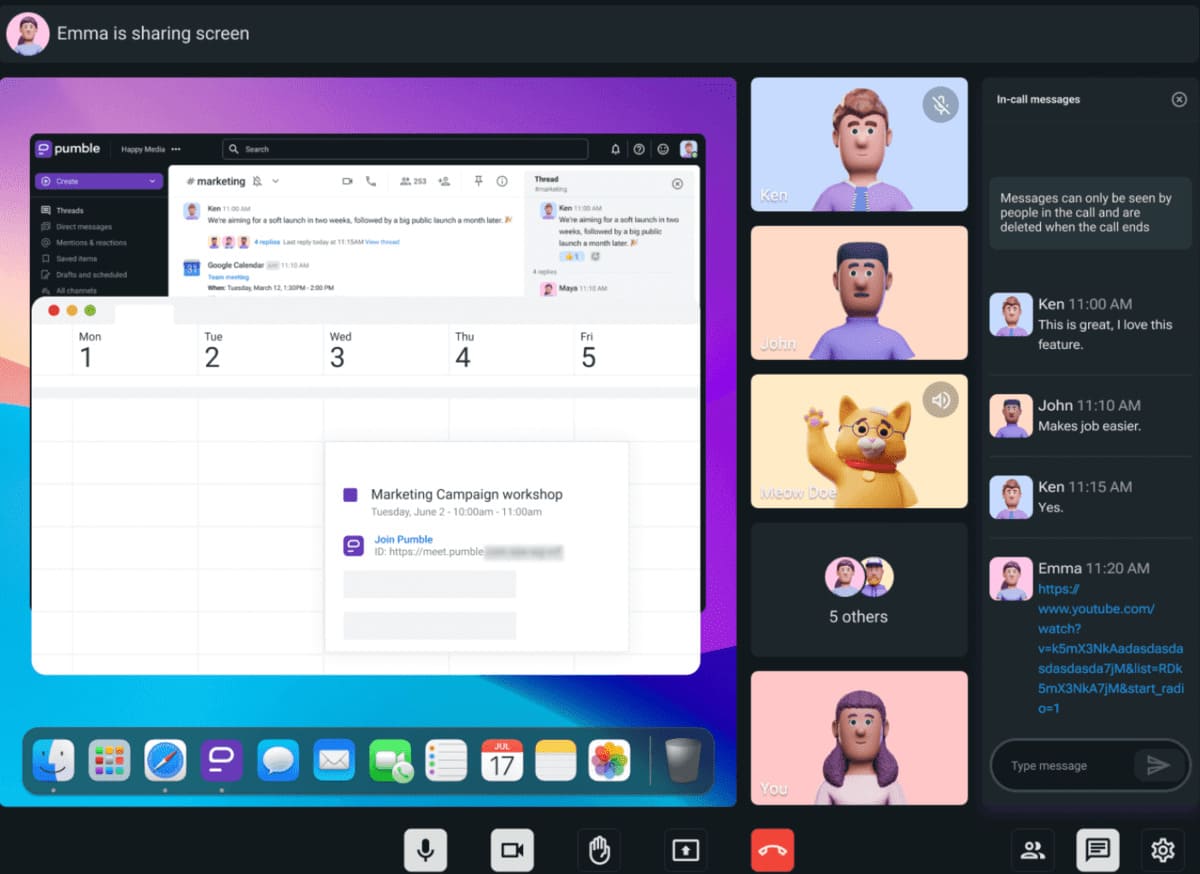
More importantly, remind remote workers they’re not being sidelined, advises Dr. Rosen:

“Managers need to reinforce — for themselves and team members — that remote employees remain contributors to the team and that work is given to everyone in accordance with their:
- Role,
- Experience, and
- Suitability for the assignment.”
Create a culture of knowledge sharing
The office has always been a place where coworkers can exchange and increase their knowledge. Eliminating proximity bias means ensuring no skill gaps form between remote workers and in-office employees.
You can start by creating an environment where everyone feels comfortable sharing their expertise with each other. This facilitates an undisrupted flow of information that appeals to talent and boosts overall performance.
Not only can you organize virtual coaching and mentorship within your organization, but you can also bring in experts via guest access for webinars and workshops.
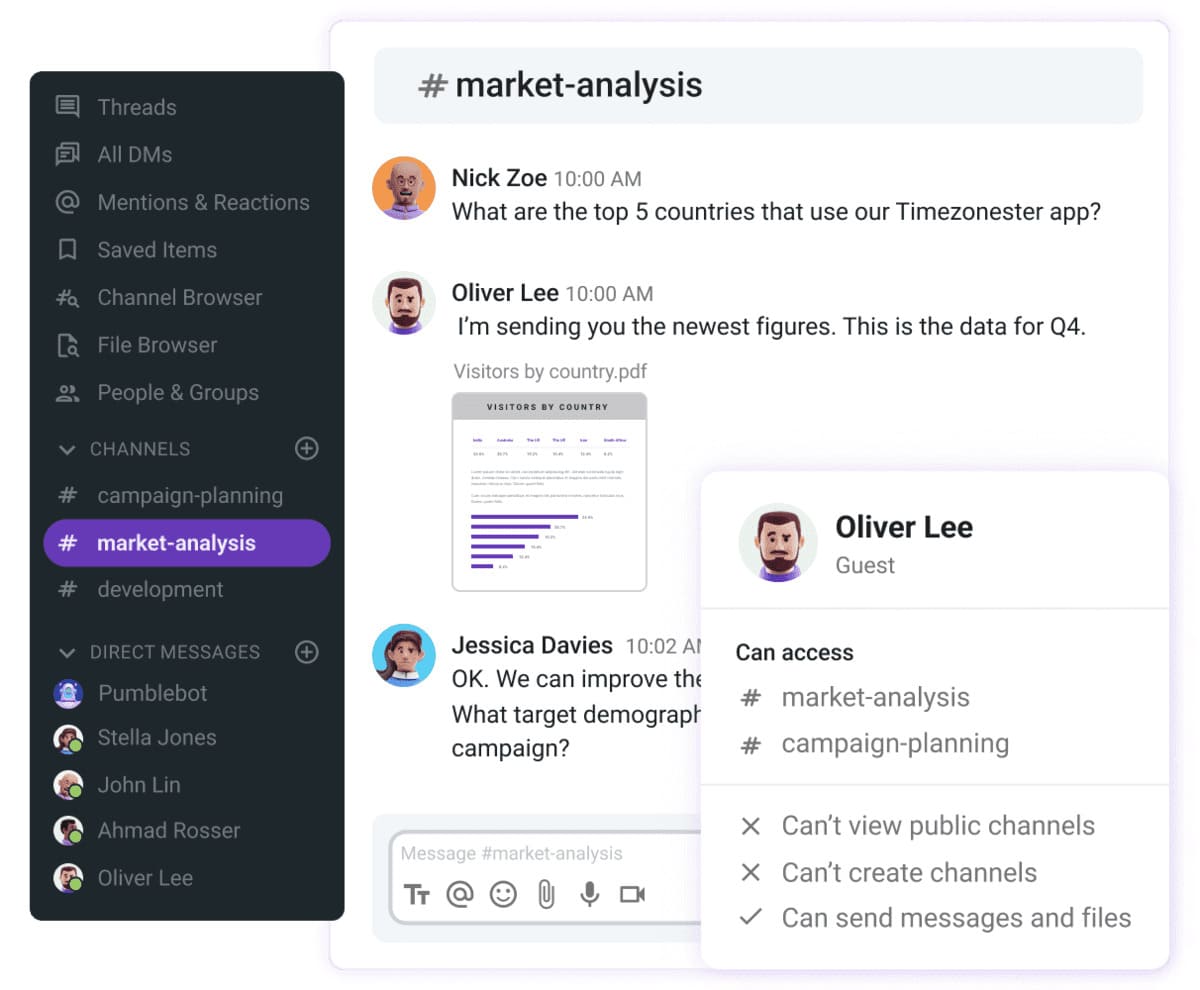
However, meetings become overcrowded and ineffective when there are too many attendees. Digital communication tools prevent this issue by allowing users to share documents and messages. Whether you’re looking for a team report or a screen recording of a webinar, it’s good to know you can find it all in one convenient place.
Out of sight, out of mind? Not with Pumble
With proximity bias in the mix, the current state of modern businesses could potentially change for the worse.
But, it’s never too late to shift the tide and start building a healthy, well-connected workplace.
With a user-friendly platform like Pumble, everyone — regardless of their location or time zone — can participate in:
- Virtual discussions,
- Face-to-face check-ins, and
- Knowledge sharing initiatives.
Give everyone on your team a voice, and sign up for Pumble today!
And, for an unbeatable trio of workplace tools, you should check out the CAKE.com Productivity Suite! Besides Pumble, you’ll get access to Clockify, our renowned time tracker, and Plaky, our intuitive project manager.





